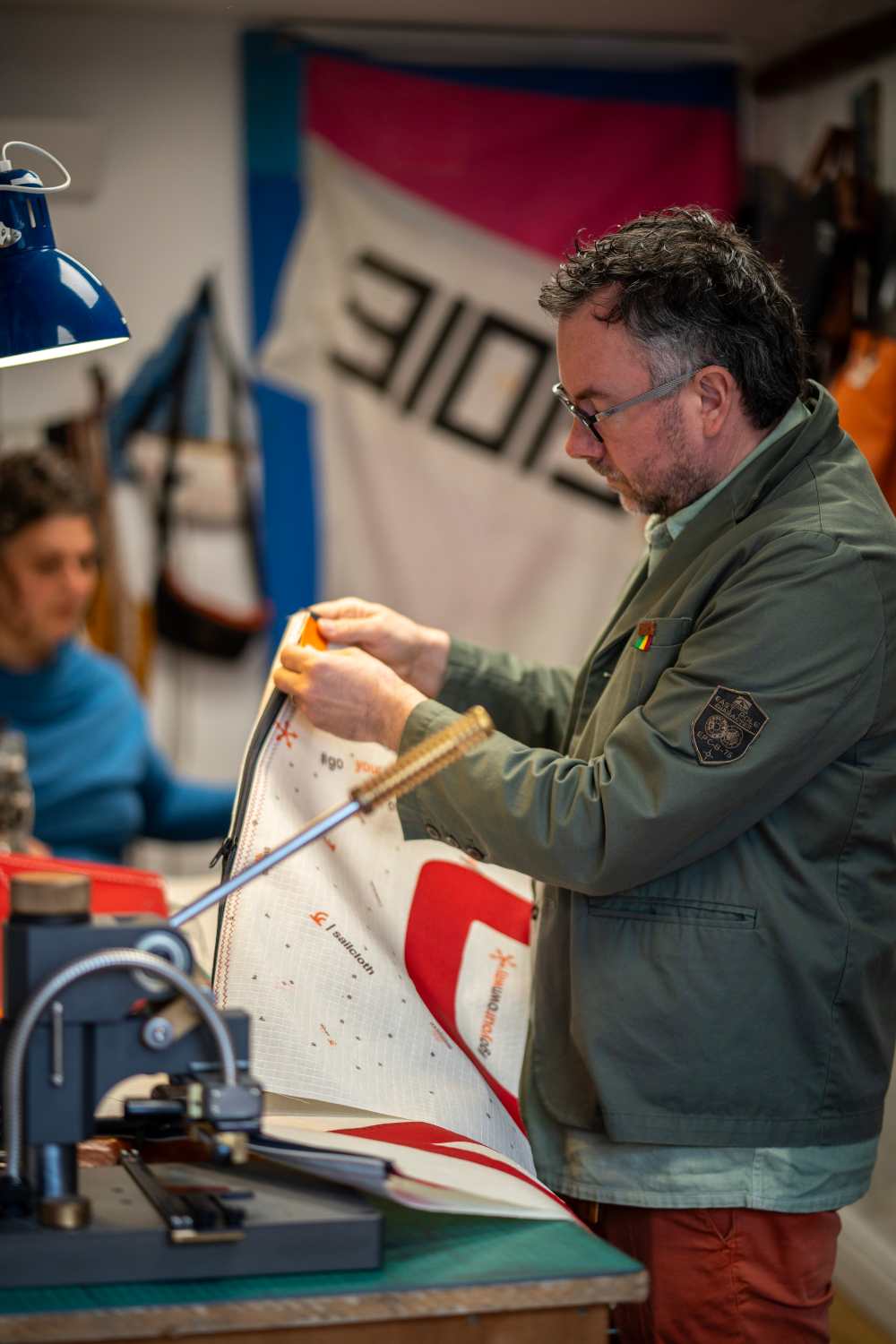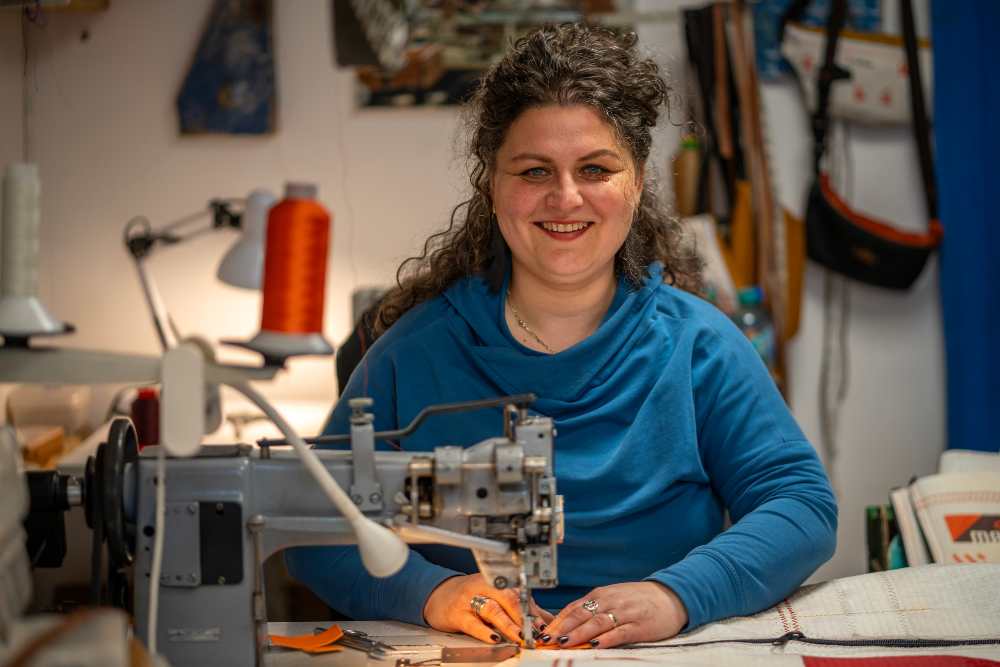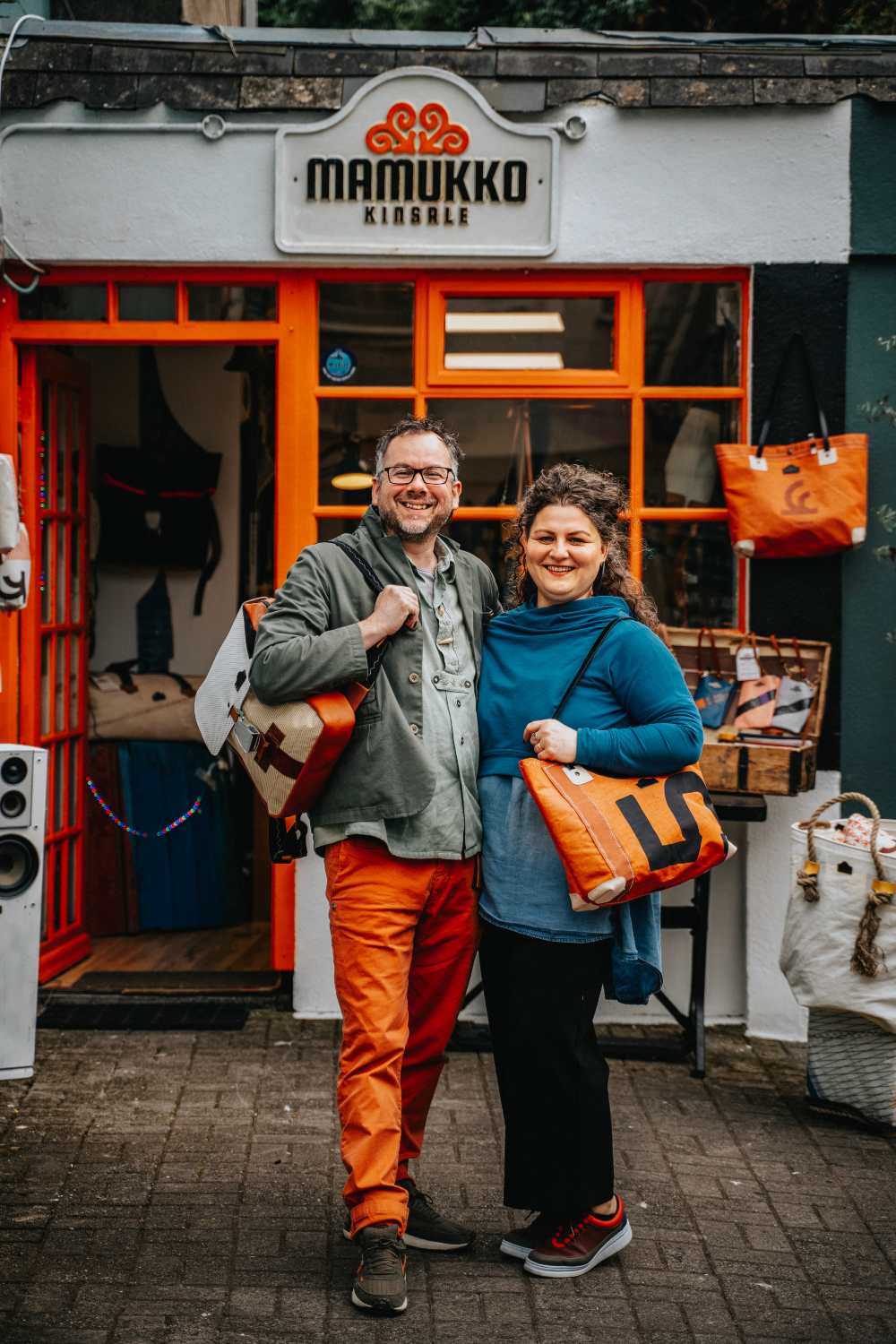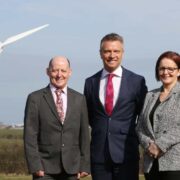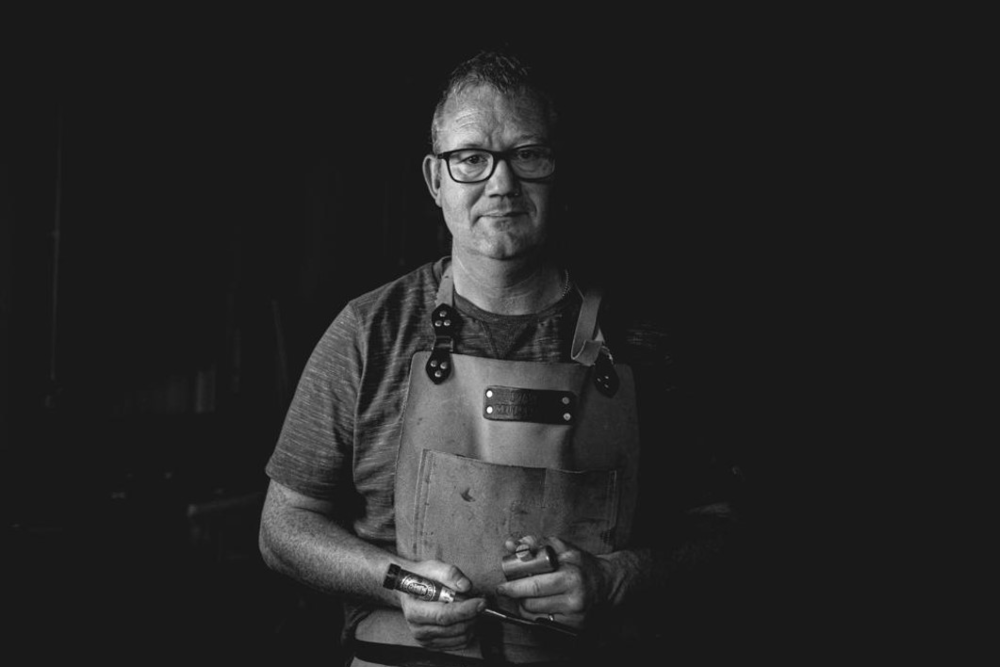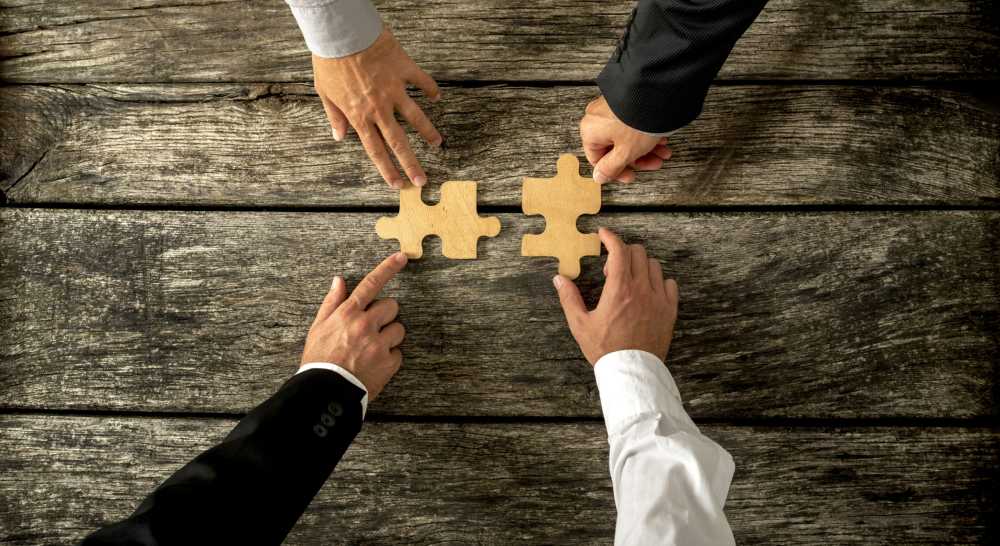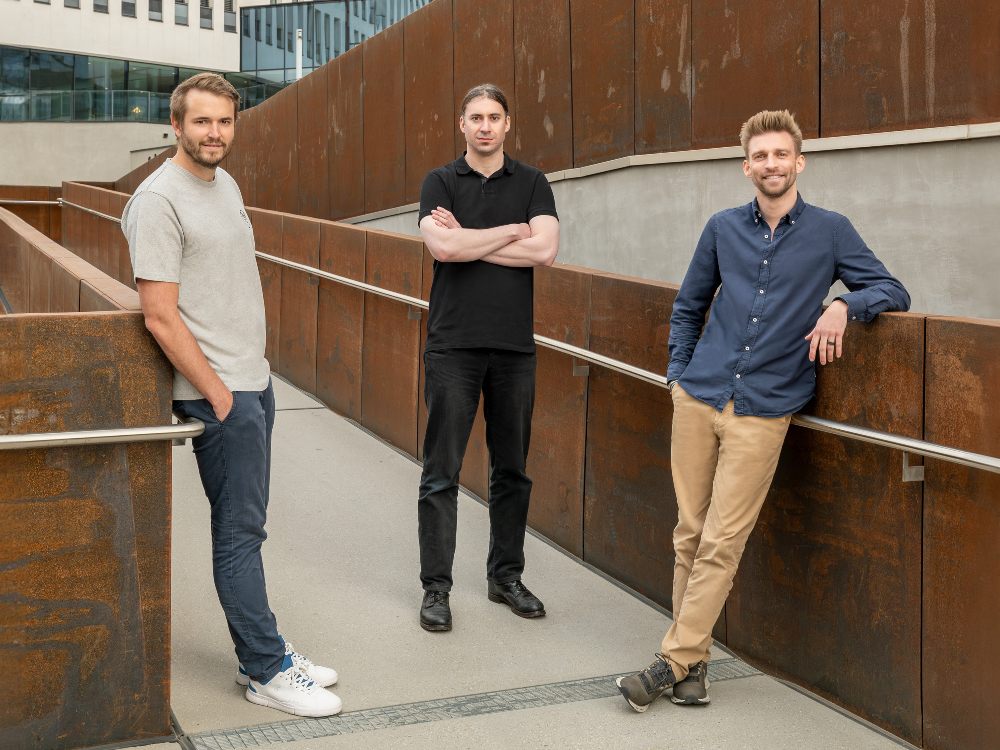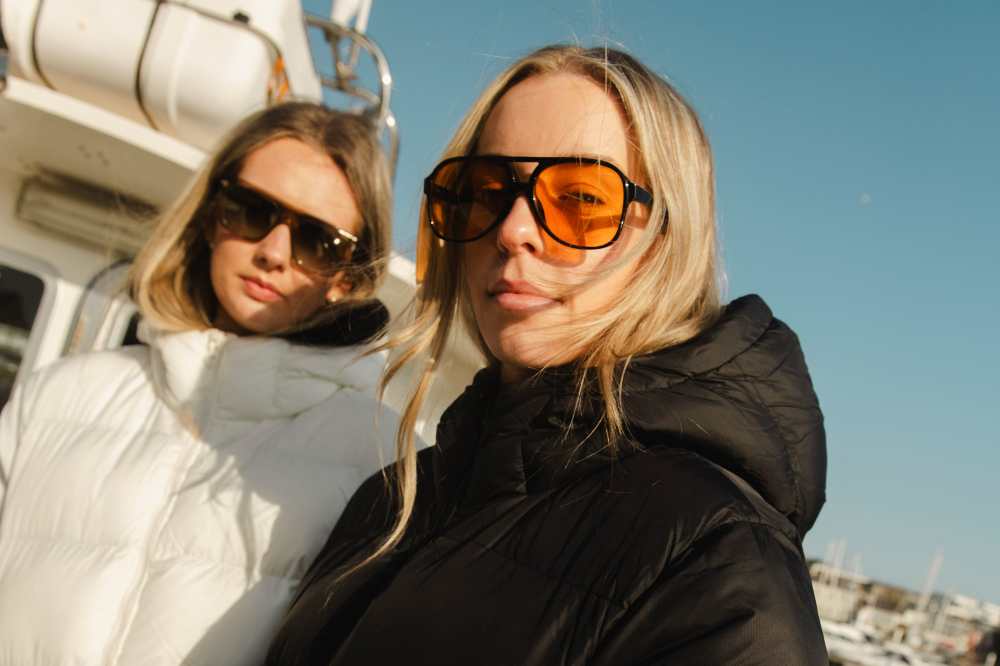What began as a response to unemployment during the recession has grown into one of Ireland’s most innovative boutique brands.
Set in the heart of Kinsale, Co. Cork, Mamukko is no ordinary design studio. Founded by brothers Attila and Levente Magyar in 2011, the business blends five generations of leatherworking heritage with a modern, mission-driven twist: upcycling materials like sails, life rafts, and aviation components into one-of-a-kind bags and accessories.
What began as a response to unemployment during the recession has grown into one of Ireland’s most innovative boutique brands – championing circular design, handmade craftsmanship, and sustainable enterprise.
“We realised that there were durable, beautiful materials lying around everywhere – old sails, decommissioned life rafts, aviation leather – and from that moment, Mamukko was born”
Here, co-founder Attila Magyar and his wife Nora share the story behind Mamukko’s origins, the challenges of pioneering a new business model, and their vision for a future rooted in creativity, quality and environmental responsibility.
Why did you start Mamukko?
Attila Magyar and his wife Nora
“We’re different because we’re rooted in both tradition and innovation”
In 2011, my brother Levente and I were both unemployed. We had come to Ireland in 2007 and were working in hospitality when the recession hit. One day, we were chatting and he said: “Let’s set up a workshop. Let’s carry on the family tradition.”
We’re fifth-generation leatherworkers – our father was a designer in a Romanian factory that employed 3,500 people, a factory started by our grandfather. Our mother was a master leatherworker too. Craft is in our blood. So, we decided to begin something small – a sewing machine, a few ideas, and the hope that we could build something meaningful.
Our father came to Ireland to teach us the art of bag-making – the techniques, the details, the dos and don’ts. Neither of us had made bags before – I had worked in hospitality, and Nora in the shoe and fashion industries – but with time, the skills came together. We realised that there were durable, beautiful materials lying around everywhere – old sails, decommissioned life rafts, aviation leather – and from that moment, Mamukko was born.
What makes Mamukko stand out?
We’re different because we’re rooted in both tradition and innovation. Everything we make is stitched in our Kinsale workshop in small batches – sometimes five, sometimes fifteen. Each bag has its own serial number and a tag explaining what materials it’s made from.
“In the beginning, it was all about materials – how to find them, store them, wash them, and make them usable. We weren’t copying a business model. We were inventing one”
But what really sets us apart is how we approach design. In most fashion companies, you create a design and then source the fabric. We flip that. The materials come first – they dictate what we make. That could be leather from a shoe factory, the rubber from a life raft, or the netting from an aeroplane seat. Even the buckles we use might come from aviation seatbelts. These materials inspire the form, not the other way around.
We also work closely with aviation and leasing companies who supply us with retired aircraft materials. In return, we create custom corporate gifts for their staff and clients. It’s a closed-loop model – sustainable, creative, and completely unique.
What challenges have you faced?
In the beginning, it was all about materials – how to find them, store them, wash them, and make them usable. We weren’t copying a business model. We were inventing one. No one else in Ireland was doing what we were trying to do, so there was a lot of trial and error.
One of the biggest hurdles has been changing the mindset around upcycling. Back in 2011, people didn’t really know the word. Even now, many big brands who use recycled materials don’t advertise it, because they think consumers associate it with low quality. But for us, these materials are premium. They’ve already survived the harshest conditions. Our job is to give them a second life – one that’s strong, stylish, and built to last.
Another challenge is the complexity of our model. We’re working with dozens of materials and one-of-a-kind supplies, so no two batches are the same. It’s part of our charm – but it does make the business more demanding.
Did you receive any support along the way?
Yes. I have an academic background – I’ve worked as a teacher, historian, librarian – so I was determined to understand the system and apply for every form of support available. We’ve received funding from the Local Enterprise Office and Enterprise Ireland, and we’ve been incredibly lucky to win 14 awards. We’ve even been featured in The New York Times, Forbes, and Stern.
Grants helped with cash flow and recognition, but I always say this: you can’t rely on them. A grant is a boost, not a business model. You still have to do the work.
What additional supports would help businesses like yours?
We need more targeted support for circular businesses. We’re doing the hard work – diverting waste, using what already exists, reducing landfill. But we’re still at a disadvantage when competing with massive brands that have scale, staff, and supply chains.
“We’re also passionate about education. We work with universities and fashion schools to bring students into our workshop and show them how circular design really works – not just in theory, but in practice”
Support doesn’t have to mean handouts. It could be tax incentives, educational campaigns, or funding that specifically encourages reuse and repair. We’re not asking for special treatment – we’re asking for a level playing field. People appreciate what we do when they see it, but systems need to catch up to support that kind of hands-on, local manufacturing.
What’s the biggest lesson you’ve learned?
Learn to love selling. That’s the biggest one. As makers, we’re naturally drawn to creating – but making is only half the job. The moment a bag goes on the shelf, the real work begins. You have to enjoy telling the story, connecting with customers, and making the case for your product.
We’ve also learned that a business like ours can’t just be about profit. For us, it has to be win–win–win: for the customer, for us, and for the planet. That belief keeps us going, even on the hard days.
What’s your vision for the future?
We want to grow our corporate collaborations, especially with aviation companies. These partnerships give us access to materials, a reliable revenue stream, and a shared story around innovation and sustainability.
We’re also passionate about education. We work with universities and fashion schools to bring students into our workshop and show them how circular design really works – not just in theory, but in practice. Our goal is to pass on what we’ve learned, keep these skills alive, and inspire the next generation of conscious creators.
We’ve come a long way since that first sewing machine in 2011. The business is still evolving, and we’re still learning. But if there’s one thing we know for sure, it’s this: going your own way – even when it’s hard – is always worth it.
-
Bank of Ireland is welcoming new customers every day – funding investments, working capital and expansions across multiple sectors. To learn more, click here
-
For support in challenging times, click here
-
Listen to the ThinkBusiness Podcast for business insights and inspiration. All episodes are here. You can also listen to the Podcast on:
-
Spotify
-
SoundCloud
-
Apple


